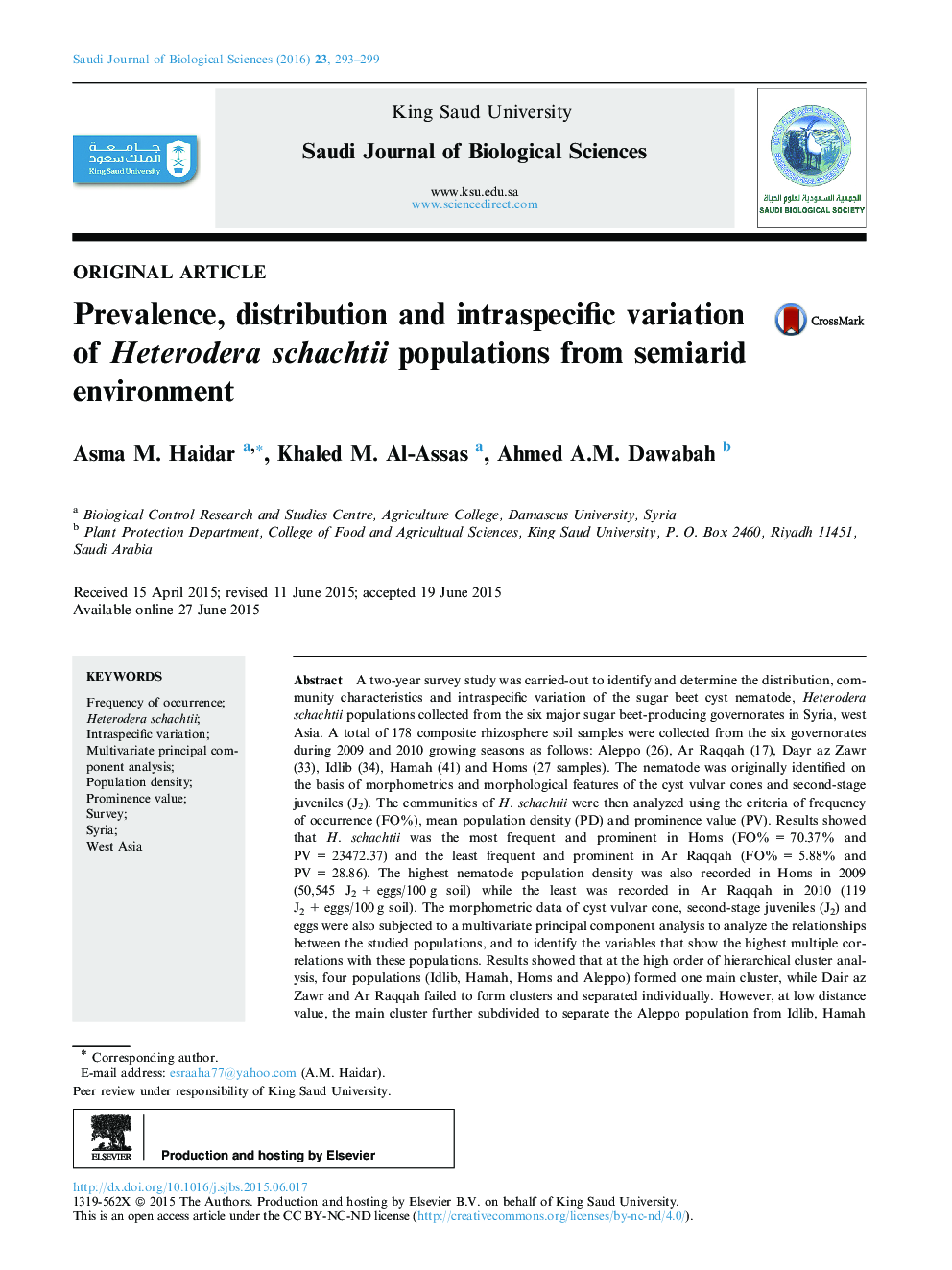| کد مقاله | کد نشریه | سال انتشار | مقاله انگلیسی | نسخه تمام متن |
|---|---|---|---|---|
| 4406183 | 1618673 | 2016 | 7 صفحه PDF | دانلود رایگان |

A two-year survey study was carried-out to identify and determine the distribution, community characteristics and intraspecific variation of the sugar beet cyst nematode, Heterodera schachtii populations collected from the six major sugar beet-producing governorates in Syria, west Asia. A total of 178 composite rhizosphere soil samples were collected from the six governorates during 2009 and 2010 growing seasons as follows: Aleppo (26), Ar Raqqah (17), Dayr az Zawr (33), Idlib (34), Hamah (41) and Homs (27 samples). The nematode was originally identified on the basis of morphometrics and morphological features of the cyst vulvar cones and second-stage juveniles (J2). The communities of H. schachtii were then analyzed using the criteria of frequency of occurrence (FO%), mean population density (PD) and prominence value (PV). Results showed that H. schachtii was the most frequent and prominent in Homs (FO% = 70.37% and PV = 23472.37) and the least frequent and prominent in Ar Raqqah (FO% = 5.88% and PV = 28.86). The highest nematode population density was also recorded in Homs in 2009 (50,545 J2 + eggs/100 g soil) while the least was recorded in Ar Raqqah in 2010 (119 J2 + eggs/100 g soil). The morphometric data of cyst vulvar cone, second-stage juveniles (J2) and eggs were also subjected to a multivariate principal component analysis to analyze the relationships between the studied populations, and to identify the variables that show the highest multiple correlations with these populations. Results showed that at the high order of hierarchical cluster analysis, four populations (Idlib, Hamah, Homs and Aleppo) formed one main cluster, while Dair az Zawr and Ar Raqqah failed to form clusters and separated individually. However, at low distance value, the main cluster further subdivided to separate the Aleppo population from Idlib, Hamah and Homs populations. The morphometric distance values ranged from 0.07 to 0.61. Hamah and Homs were the closest populations while Dair az Zawr showed the most diverse population. This study also revealed the value of J2 body length, egg length and width, fenestral length and width and the number of bullae inside the cyst vulvar cone in determining the intraspecific variations among the Syrian populations of H. schachtii.
Journal: Saudi Journal of Biological Sciences - Volume 23, Issue 2, March 2016, Pages 293–299